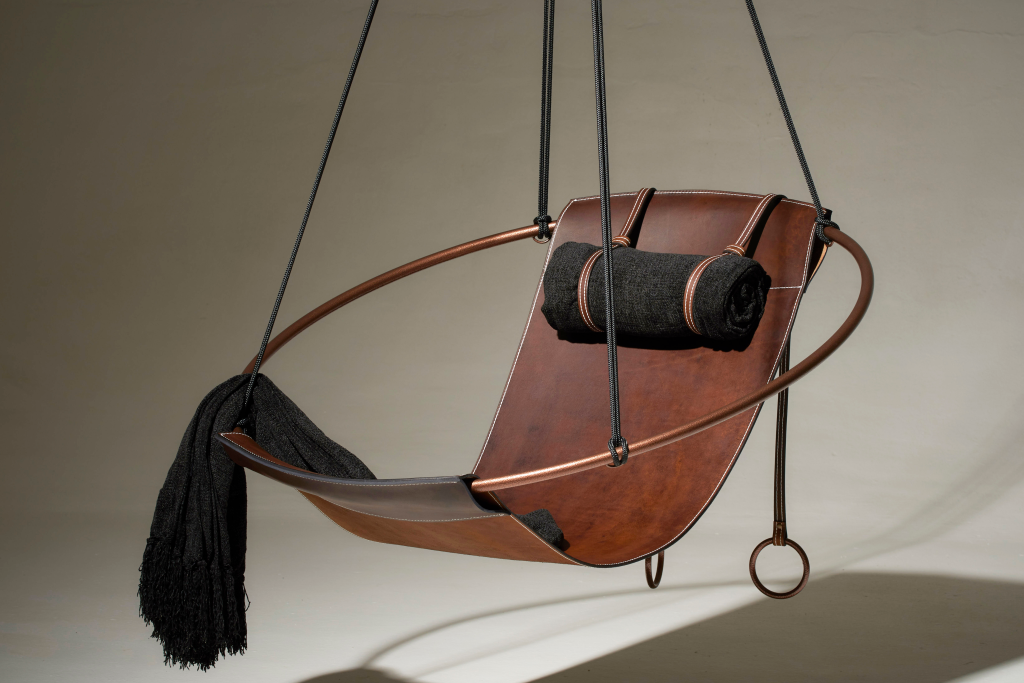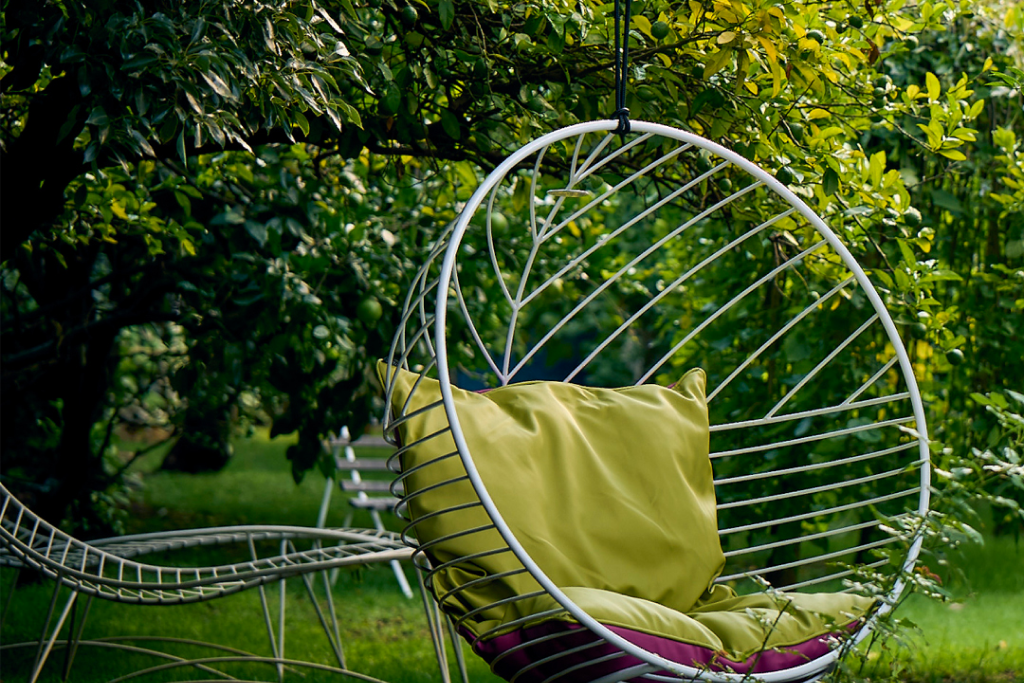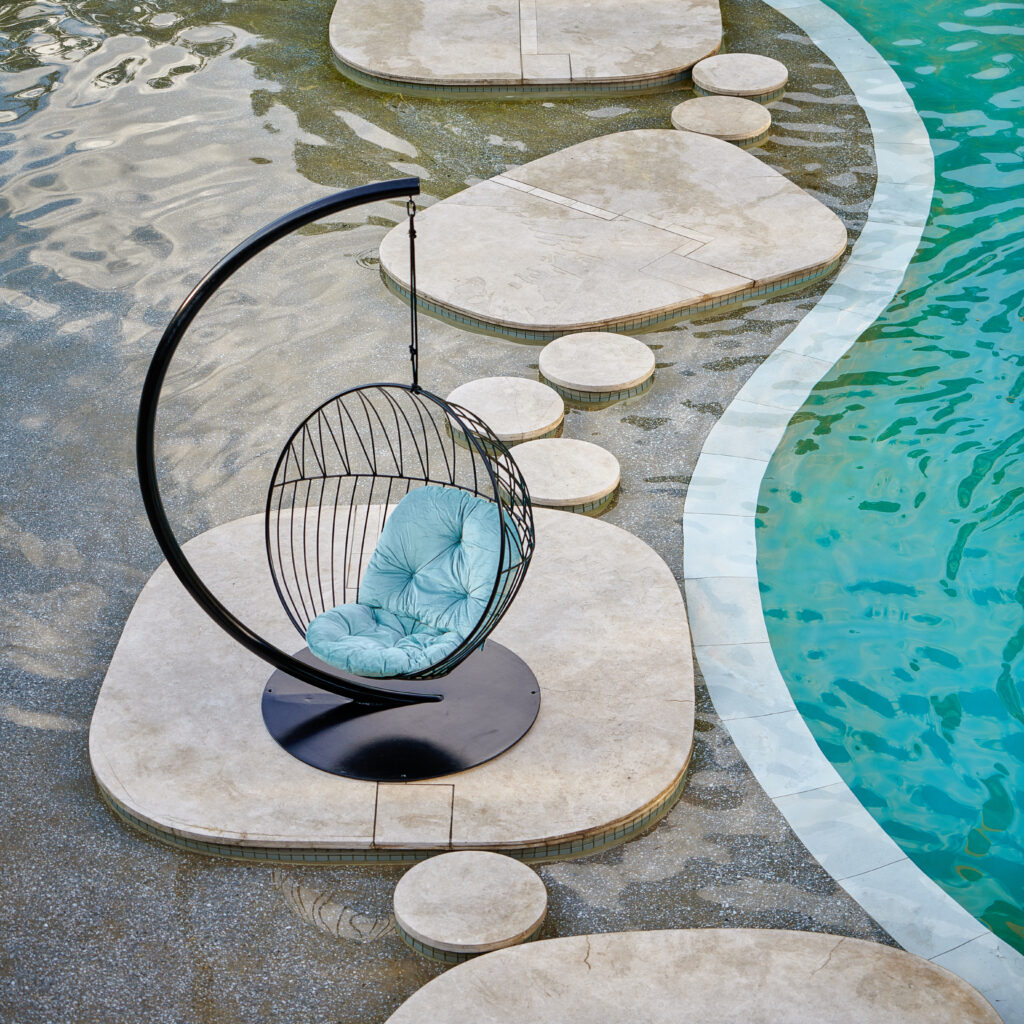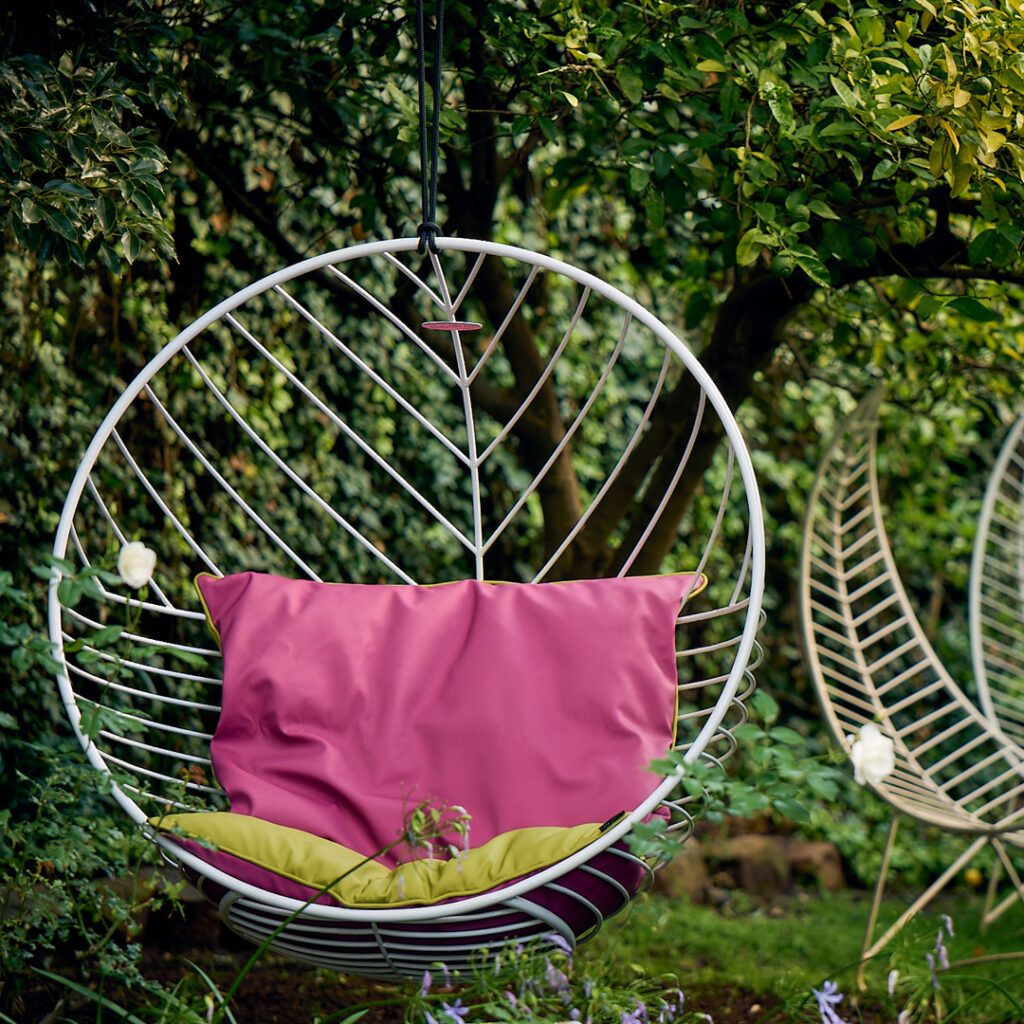Studio Stirling for Edenpark Firenze

Beautiful hanging swing chairs are the passion of Studio Stirling. Each one of our chairs is made by hand and it allows for each piece to have individualism and uniqueness in some of the pattern detailing due to the variance of craftsmanship. Joanina Pastoll is the designer and creator of the brand and offers insight into the design process.

How would you characterize your design philosophy?
For me, there are three tiers to good chair design: it has to be aesthetic, it has to be functional, and it has to elicit from a user some emotional connection. I am talking about an experiential space, what happens to you when you are in the chairs. They are there for you to spend time in, chill and relax in. What happens when you sit down matters to me, it has to have the added dimension of relaxation and how that affects your emotional state. When we make a chair, we get people with various body types to sit in it for size, spatial relationship and also for comfort. We make a few different prototypes to get it ergonomically sound.
What are your initial sources of inspiration?
Nature inspires a lot of my designs: trees, twigs, the leaves in my garden, and new vistas I experience when traveling, in particular. Johannesburg, where I live, has a lot of trees and is one of the largest manmade urban forests in the world. There is also an African influence, often in terms of the materials which I am using or in the decorative patterns.
What materials do you work in and why?
The chairs are made of metal, hand-welded in Johannesburg by local artisans, powder-coated and protected with a rust treatment for outdoor use. I also work in leather, cowhides, as well as vegan options. One of our Sling hanging chairs is made in cactus leather, a highly-sustainable environmentally-friendly vegan material, and then is lined with a unique traditional South African fabric known as Shwe Shwe. Everything is handmade by our craftsmen.

I am a graphic designer originally. I was born in Pretoria where I studied art at the university there and then for years pursued a successful career in advertising and won many international awards for my work. One day in 2014, I was renovating a small cottage at our house and wanted to have some hanging chairs but couldn’t find anything that I really liked — there was a lot of cheap and nasty stuff, it wasn’t comfortable, no airflow, ugly to look at or reliant on stands that would frequently topple over. I decided then to design my own hanging chairs and have them manufactured locally — something strong, comfortable and yet accessible in pricing. In 2015, I showed the results to a few of my interior design friends and everybody loved them.
Tell us about your design process — how does it begin and evolve to the product stage?
Our passion is hanging chairs. We work in South Africa and supply the international market but we only produce what we can manufacture ourselves. I do sketches and drawings, then we make up a few prototypes and discuss, sit in them and test the design, work out dimensions. We work directly into a final substratum of metal for prototypes. This is not like a big factory environment in Europe where you create a CAD drawing and then sophisticated machinery, with the help of computers, will customize and automatically create things. We love the aspect of the hand made and it is a part of our philosophy to support local people in the manufacturing process. Everything is done by hand here.
Do you have a favorite piece you have made?
That is difficult. The best seller is the Nest Egg, it works inside and outside for different seasons and can be easily customized, but I love the Bubble, as it comes in many patterns and colors. I like the sense of playfulness and so if I can do it in a nice color and it is fun I can create pleasing textures and patterns. The welding is different for each one, they aren’t mass-made. All of the hanging chairs come with specially made springs, specifically tensioned for us, which gives a beautiful, very soft sitting experience. There is a wide choice and range of cushions to make them comfortable.

I love the work of Eduardo Villa, a South African sculptor and I feel as if he could be a subliminal inspiration for some of my new designs. I admire the architecture of Tadao Ando and Kengo Kuma. I was lucky enough to visit Japan and went to Naoshima Island to see Ando’s work there and a building he designed with an installation by James Turrell. I also love Vitra as a brand, and yes, Charles and Ray Eames.
What are you most proud of about your business?
I’m immensely proud that we are working in an African environment with handmade items executed to a global standard. I think it’s quite amazing. We sell all over the world: we are in the Singapore airport, Google head office, T-Mobile offices in Washington D.C., Uber head office in Australia, various hotels in London, Las Vegas, even spas in Alaska. The variety of clients are inspiring. I am delighted there is a market that understands and respects a thoughtfully designed item that is handmade, recognizing that they are different and individually formed. The chairs have also been used by therapists and doctors for children with autism and disabled people. They evoke a cocoon, safe womb-like feeling, and the soft motion benefits the vestibular system, is calming and so that has become an important charity for our support.
What one place would you like your work to be shown if you could choose and why?
I would love to see one of my chairs hanging in Design Miami or at Design Basel. I think an audience that is educated, that appreciates and has an affinity with art and design is terrific. I’d also like to show alongside fellow creators as the passion and love for creating shows.
To read the full article click HERE





